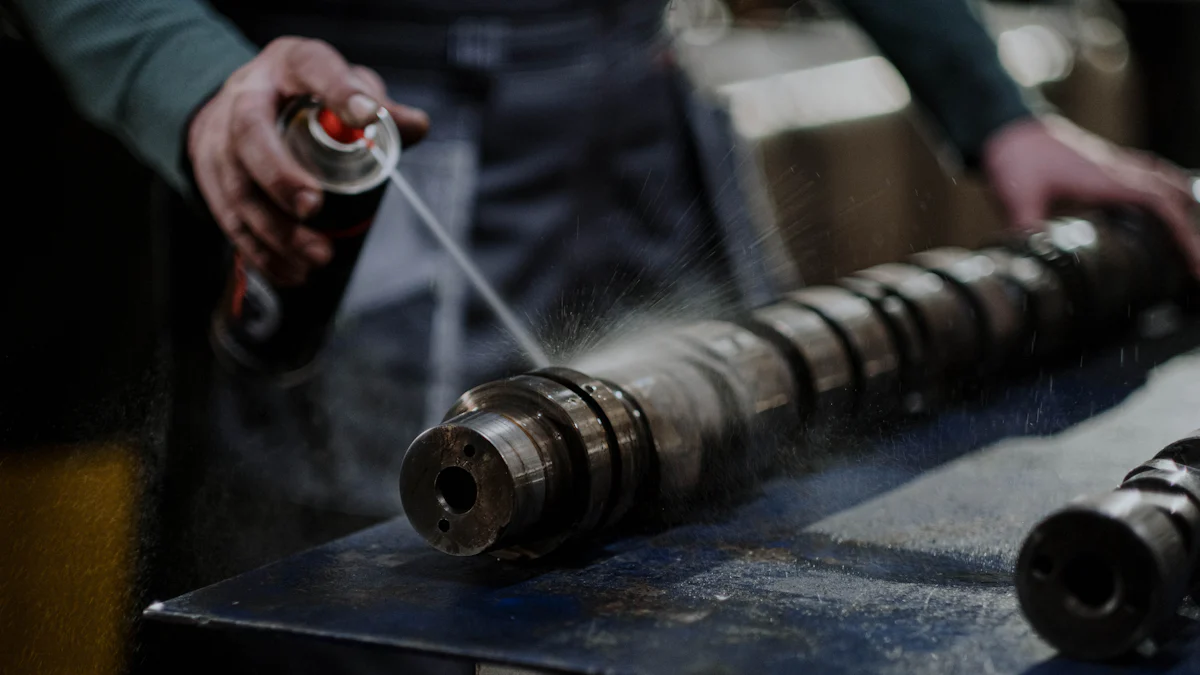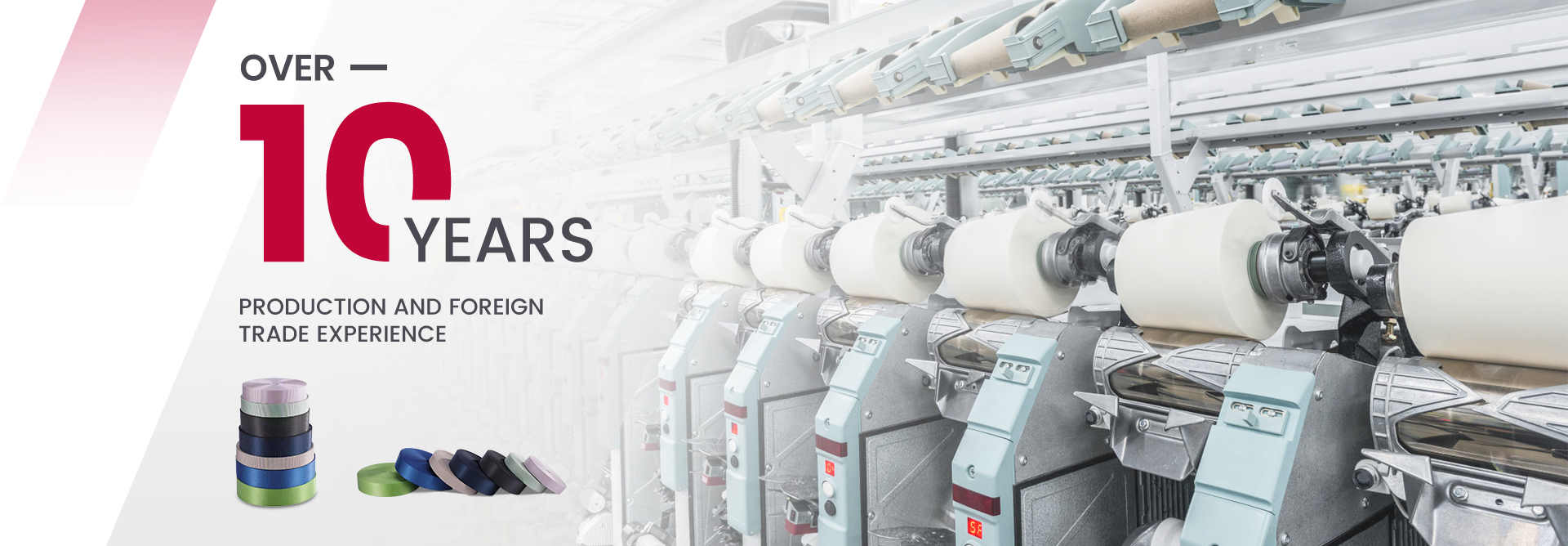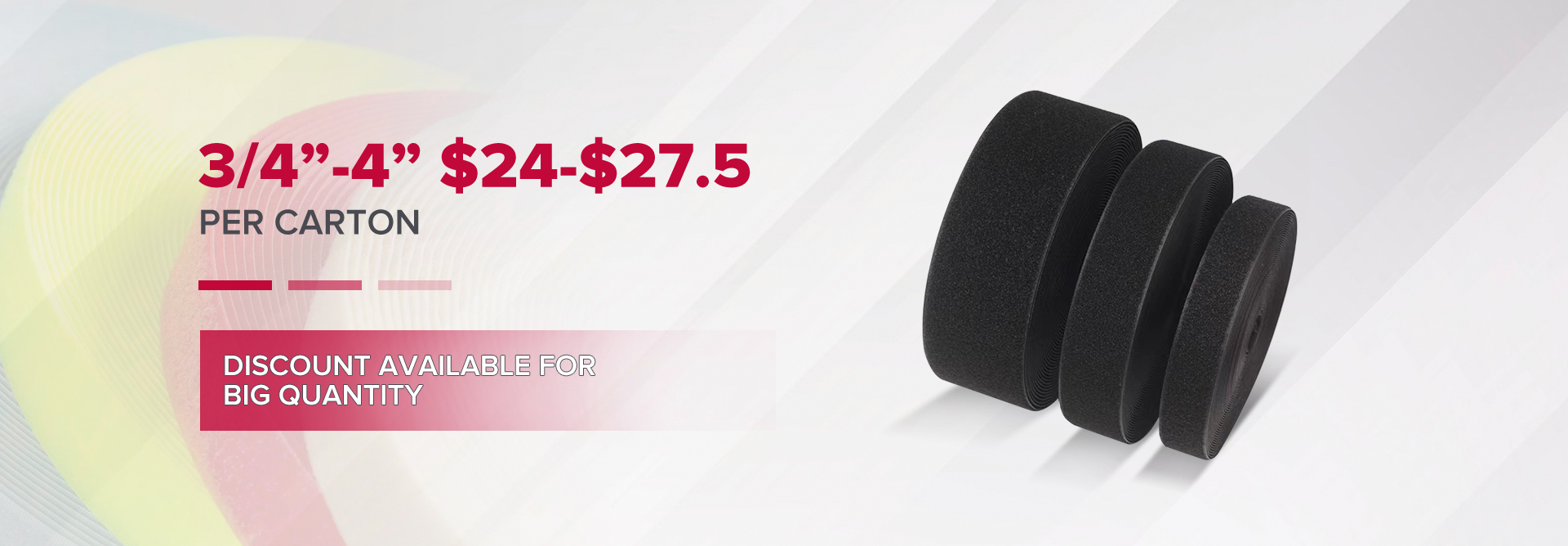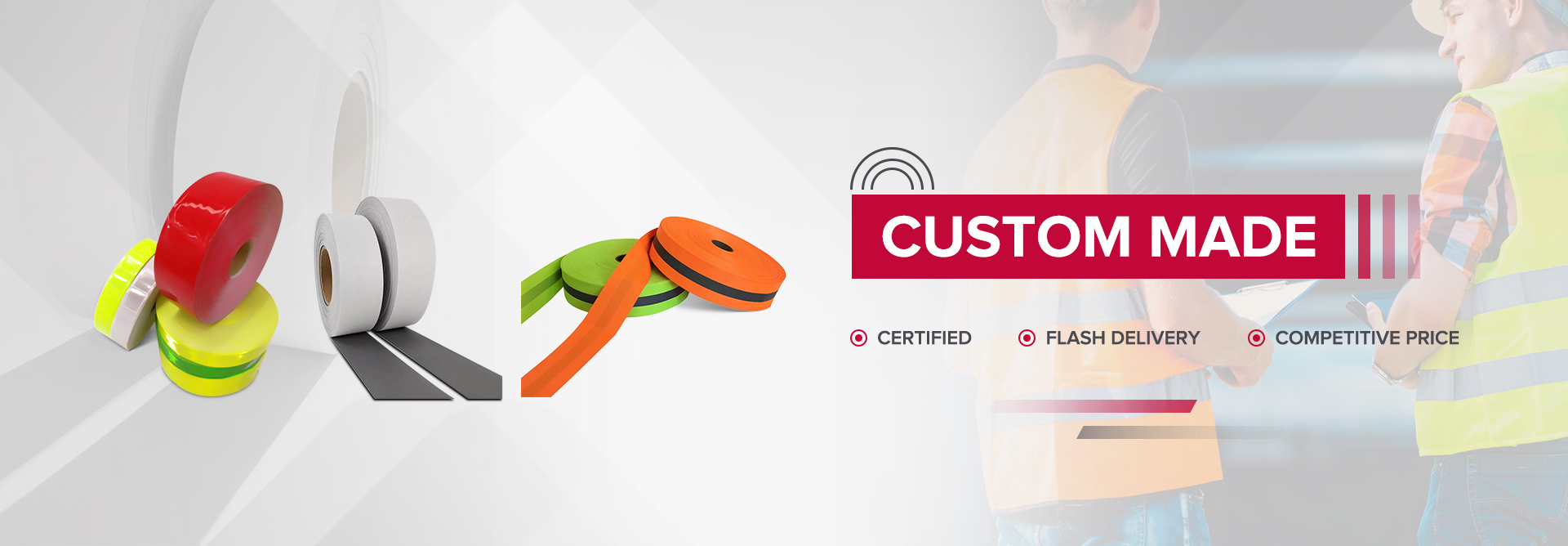
Choosing the right hook and loop tape can make or break your project. I’ve learned that the right option boosts durability and ease of use. For example, a Back to Back Double Sided Velcro Hook and Loop Tape Roll works wonders for organizing cables. It’s all about finding what fits your needs best.
Key Takeaways
- Pick the right hook and loop tape for your project. Use sew-on for cloth and adhesive for solid surfaces.
- Check how strong the tape is and if it works with your materials. Nylon and polyester are good for many uses.
- Try a small piece of tape first before using it. This makes sure it sticks properly and works as you want.
Understanding Hook and Loop Tape
What Is Hook and Loop Tape?
Hook and loop tape is a fastening system that’s both simple and ingenious. It was invented by Georges de Mestral, a Swiss engineer, in 1941. He got the idea after noticing how burrs clung to his clothes and his dog’s fur during a walk. By 1955, he patented the product, and it became widely known as Velcro. Over the years, this tape has evolved and found its way into countless industries, from fashion to space exploration. Fun fact: NASA even used it during the Apollo program!
What makes hook and loop tape special? It’s reusable, flexible, and incredibly versatile. Unlike zippers or buttons, it allows for quick fastening and unfastening without losing its grip. Whether you’re organizing cables or securing clothing, it’s a go-to solution for many.
How Does It Work?
The magic lies in its two components: hooks and loops. One side of the tape has tiny hooks, while the other side has soft loops. When pressed together, the hooks latch onto the loops, creating a secure bond. Need to separate them? Just peel them apart! It’s that easy. This design makes it user-friendly and maintenance-free. Plus, it works on a variety of surfaces, from fabric to plastic.
Components of Hook and Loop Tape
Hook and loop tape is made from durable materials to ensure long-lasting performance. Common materials include cotton, nylon, polyester, and polypropylene. Here’s a quick look:
| Material |
|---|
| Cotton |
| Polypropylene |
| Nylon |
| Polyester |
Each material offers unique benefits. For example, nylon is strong and flexible, while polyester is resistant to moisture. This variety makes the tape adaptable to different environments and applications.
Types of Hook and Loop Tape

Sew-On Hook and Loop Tape
I’ve used sew-on hook and loop tape for countless projects, and it’s a classic choice. This type doesn’t rely on adhesives, so it’s perfect for fabrics. You just stitch it onto your material, and it stays put. I love how durable it is, especially for clothing or upholstery. It’s also washable, which makes it ideal for items that need regular cleaning. If you’re working on a sewing project, this is your go-to option.
Adhesive Hook and Loop Tape
Adhesive hook and loop tape is a lifesaver when sewing isn’t an option. It comes with a sticky backing that you can press onto surfaces like plastic, metal, or wood. I’ve used it for quick fixes around the house, like attaching remote controls to the side of a table or organizing cables. It’s super convenient, but you’ll want to make sure the surface is clean and dry before applying it. Keep in mind, though, that it might not hold up well in extreme heat or moisture.
Fire-Retardant Hook and Loop Tape
Fire-retardant hook and loop tape is a game-changer for safety-focused projects. It’s made from flame-resistant materials, so it doesn’t melt or deform under high temperatures. I’ve seen it used in industries like aerospace, automotive, and marine. For example, it’s great for securing components in aircraft interiors or improving fire safety in vehicles. It’s also eco-friendly and just as easy to use as regular hook and loop tape. If safety is a priority, this is the tape you need.
Specialty Hook and Loop Tapes
Sometimes, you need something a little more specialized. Specialty hook and loop tapes include options like waterproof, heavy-duty, or molded hooks. I’ve used heavy-duty tape for outdoor projects, and it’s incredibly strong. Waterproof tape is perfect for marine applications or anything exposed to moisture. Molded hooks, on the other hand, offer extra durability for industrial uses. These tapes are designed to handle specific challenges, so they’re worth considering if your project has unique requirements.
Factors to Consider When Choosing Hook and Loop Tape
Durability and Strength
When I choose hook and loop tape, durability and strength are always at the top of my list. The material plays a huge role here. Nylon and polyester are my go-to options because they’re tough and long-lasting. But it’s not just about the material. I also think about where the tape will be used. For example, if it’s exposed to sunlight, water, or chemicals, I make sure it’s designed to handle those conditions. Testing standards like ASTM D5169 can also give you peace of mind about the tape’s shear strength. And if you’re sewing it on, don’t forget that the thread and sewing technique can impact how well it holds up over time.
Application Method (Sew-On vs. Adhesive)
Deciding between sew-on and adhesive hook and loop tape depends on the project. I prefer sew-on tape for fabrics because it stays secure and can handle washing. On the other hand, adhesive tape is perfect for quick fixes or when sewing isn’t an option. I’ve used it to stick things onto plastic and wood, but I always make sure the surface is clean and dry first. Just keep in mind that adhesive tape might not hold up as well in extreme heat or moisture.
Material Compatibility
Not all hook and loop tape works on every surface. I’ve learned this the hard way! For fabrics, sew-on tape is the best choice. For hard surfaces like metal, plastic, or wood, adhesive tape works wonders. If you’re unsure, test a small piece first. It’s better to find out early if the tape won’t stick or hold properly.
Environmental Factors
Where you’ll use the tape matters a lot. If it’s going outdoors, I always pick a tape that can handle heat, moisture, or even freezing temperatures. For example, waterproof or heavy-duty options are great for outdoor projects. If the tape will be near fire or high heat, fire-retardant tape is a must. Thinking about these factors ahead of time can save you from frustration later.
Size and Color Options
Hook and loop tape comes in all sorts of sizes and colors, which makes it super versatile. For heavy-duty projects, I go for wider tape because it holds better. For smaller or delicate designs, narrower tape works best. And let’s not forget color! Matching the tape to your fabric or surface can give your project a polished, seamless look.
Common Applications of Hook and Loop Tape

Home and DIY Projects
I’ve found hook and loop tape to be a lifesaver for home and DIY projects. It’s so versatile! For instance, I use it to hang art on my walls without damaging the paint. It’s also perfect for displaying my kids’ favorite creations. When it comes to organizing, it’s a game-changer. I wrap cords to keep them from tangling and secure wrapping paper rolls to stop them from crumpling. I’ve even used it to mount tools on the wall in my garage.
Need quick fixes? Hook and loop tape works wonders for emergency clothing repairs or keeping tablecloths in place during outdoor picnics. I also use it to attach seasonal decorations or hang Christmas lights. It’s amazing how something so simple can make life so much easier.
Industrial and Commercial Uses
In industrial and commercial settings, hook and loop tape shines because of its durability and flexibility. I’ve seen it used in everything from securing equipment to organizing cables in offices. Its adhesive-backed options make it easy to apply, and it holds up well in extreme temperatures. Plus, it’s reusable, which saves money in the long run.
Safety is another big plus. Flame-resistant varieties are perfect for high-temperature environments, like factories or construction sites. It’s reliable indoors and outdoors, making it a go-to solution for many industries.
Medical and Safety Applications
Hook and loop tape plays a crucial role in medical and safety applications. I’ve noticed how its adjustability and comfort make it ideal for patient care. For example, it’s used in medical devices like braces and straps, where strength and skin safety are essential. Hypoallergenic options ensure it’s safe for sensitive skin, which is a must in healthcare settings.
Its ease of use also stands out. Medical professionals can quickly adjust or remove it without causing discomfort. It’s a small detail that makes a big difference in patient care.
Fashion and Textile Applications
In fashion, hook and loop tape adds both functionality and creativity. I’ve seen it used in jackets and shoes for adjustable closures, which is super convenient. It’s also great for industrial textiles, like securing fire-resistant fabrics in hazardous environments.
At home, it’s a handy tool for curtains and cushion covers. I love how it allows for easy adjustments and seamless closures. Plus, it supports sustainability by reducing waste. Some brands even use recycled materials, which is a win for the planet.
Tips for Selecting the Best Option
Evaluate Your Project Requirements
When I start a project, I always take a moment to figure out exactly what I need from my hook and loop tape. It’s like solving a puzzle—each piece matters. Here’s how I break it down:
- What weight will the tape need to support? For lightweight items, I go with narrower tape, like 1 inch or less. For heavier items, I choose wider options, sometimes up to 3 inches.
- What surface will it stick to? Fabric, plastic, or wood all need different types of tape.
- Will I need to fasten and unfasten it often? If yes, I make sure the tape can handle repeated use.
- How much space do I have for applying the tape? This helps me decide on the size.
Answering these questions makes the decision so much easier.
Test Before Committing
I’ve learned the hard way that testing is key. Before I commit to a specific tape, I always try a small piece first. This helps me see if it sticks well and holds up under pressure. It’s a quick step that saves a lot of frustration later.
Consider Long-Term Use and Maintenance
Durability matters. I think about how long the tape needs to last and how often it’ll be used. For outdoor projects, I pick waterproof or heavy-duty options. For washable items, sew-on tape works best. Maintenance is also important. I make sure the tape is easy to clean or replace if needed.
Plan Quantities for Hook and Loop Components
Running out of tape mid-project is the worst! I always measure carefully and plan how much I’ll need for both the hook and loop sides. It’s better to have a little extra than not enough. Trust me, this step saves time and stress.
Choosing the right hook and loop tape can make all the difference. Here’s what I always keep in mind:
- Understand Your Project Requirements: Think about weight, surface, and how often you’ll use it.
- Pick the Right Width: Narrow for light items, wider for heavy-duty.
- Measure Carefully: Plan for enough length.
- Consider Materials and Environment: Match the tape to your conditions.
By focusing on these steps, you’ll find the perfect tape for your project.
FAQ
What is the difference between sew-on and adhesive hook and loop tape?
Sew-on tape works best for fabrics and washable items. Adhesive tape sticks to hard surfaces like plastic or wood. I choose based on the project’s material.
Can hook and loop tape be reused?
Yes, it’s reusable! I’ve used the same tape multiple times. Just keep the hooks and loops clean for the best grip.
How do I clean hook and loop tape?
I use a small brush or tweezers to remove debris from the hooks and loops. It’s quick and keeps the tape working like new!
Post time: Feb-14-2025



